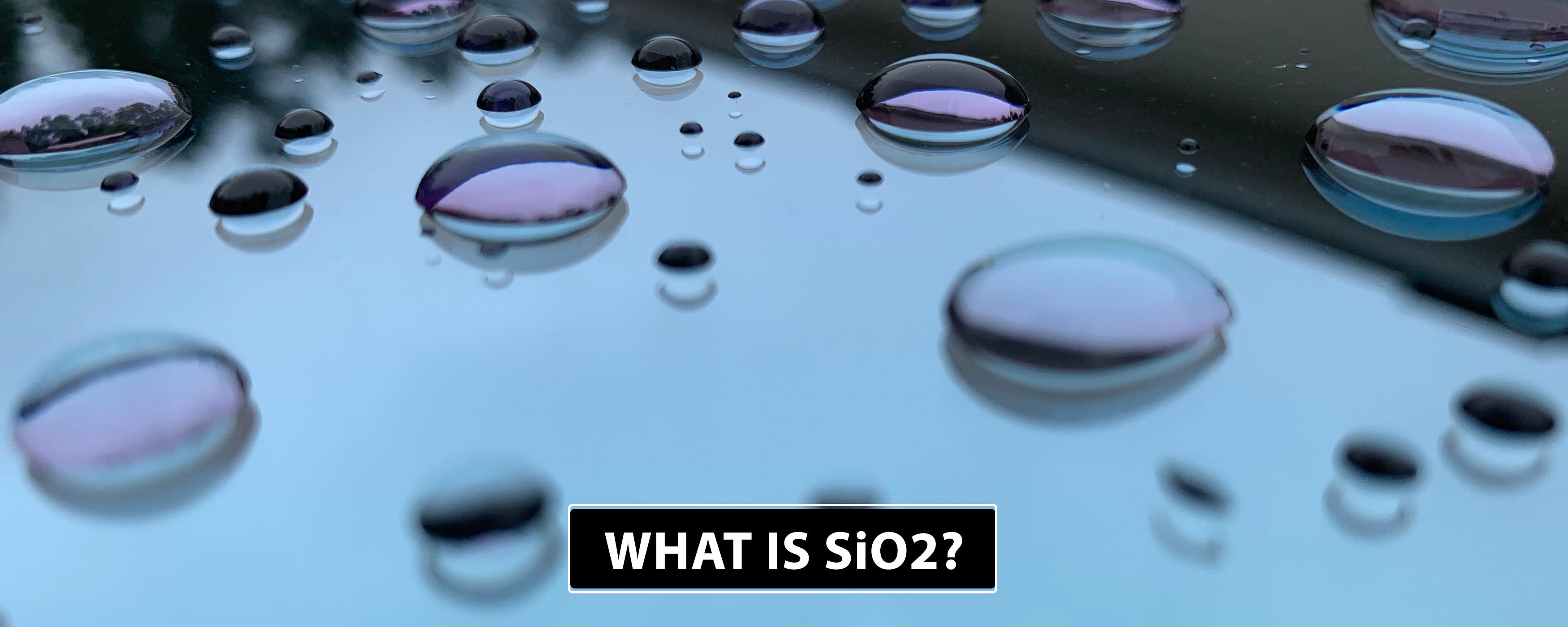FREE US SHIPPING ON ORDERS $75+ (LOWER 48 STATES)
FREE DETAILING ADVICE +1-877-838-2672

SiO2, also known as silicon dioxide or silica, is a compound that has gained significant popularity in the car detailing industry. It is commonly used in various car detailing products due to its exceptional durability, hydrophobic properties, and protective capabilities. Essentially, SiO2 is the primary compound utilized in ceramic coatings, which is the basis for ceramic only in a liquid form that usually hardens after application.
SiO2 ceramic coatings are a type of protective coating applied to a vehicle's exterior surfaces. These coatings are composed of nanoparticles of silicon dioxide suspended in a liquid solution. When applied to a vehicle, the liquid evaporates, leaving behind a hardened layer of SiO2 nanoparticles that bond to the surface at a molecular level. This forms a protective barrier that enhances the appearance and safeguards the vehicle from environmental elements.
Everyone boasts about ceramic (SiO2) coatings as it is the in-thing for vehicle detailing, potentially allowing you to wash your vehicle less because you have a protective layer applied. One of the key advantages of SiO2 ceramic coatings is their remarkable durability. Once cured, these coatings provide long-lasting protection against UV rays, oxidation, corrosion, chemicals, and other contaminants. This durability ensures that the vehicle's paint remains protected and maintains its glossy finish for an extended period.
Furthermore, SiO2 ceramic coatings offer excellent hydrophobic properties. The coating creates a highly smooth and slick surface, causing water and other liquids to bead up and roll off effortlessly. This hydrophobic effect significantly reduces the adherence of dirt, dust, and grime to the vehicle's surface, making it easier to clean and maintain. Additionally, the self-cleaning properties help prevent water spots and stains, allowing the vehicle to retain its pristine appearance for longer.
SiO2 ceramic coatings also provide a protective barrier against minor scratches, swirl marks, and marring. While they do not eliminate the risk of damage entirely, the coating acts as an extra layer of defense, reducing the impact of daily wear and tear on a vehicle's paint and clearcoat.
Car detailing products that use SiO2 ceramic technology offer a range of applications. SiO2-based sprays, sealants, and waxes are commonly used as quick detailing products to enhance the shine and protection of the vehicle's paint in between thorough washes. These products can be easily applied and provide a temporary boost to the hydrophobic properties of the existing ceramic coating.
Additionally, SiO2 ceramic coatings are available in concentrated form, allowing professional detailers to perform a complete paint correction and protection process. This involves thorough cleaning, paint decontamination, polishing to remove imperfections, and the application of a SiO2 ceramic coating for long-lasting protection.
It's important to note that the application of SiO2 ceramic coatings requires proper surface preparation, including paint correction, to ensure the best results. Additionally, these coatings typically require cure times, during which the vehicle should be kept dry and away from water or rain.
When it comes to sealants that use SiO2 technology, many can use the ceramic properties to provide a hydrophobic layer that lasts a long time and proves to be durable enough through its hardening. The different hardness levels usually range around H7 but rarely are stable or viable at a hardness of H9 or above on the Mohs scale of mineral hardness. If a SiO2 sealant or ceramic touts a hardness of H9 or above, it may not be realistic as such a hardness is at the level of a diamond and does not allow any flexing and may eventually flake off.
We want you to be 100% satisfied with everything you buy from TopCoat. And if you’re not entirely happy with your purchase we will refund your money in full, or exchange the goods. All we ask is that you contact our customer services and then return the products back to us.